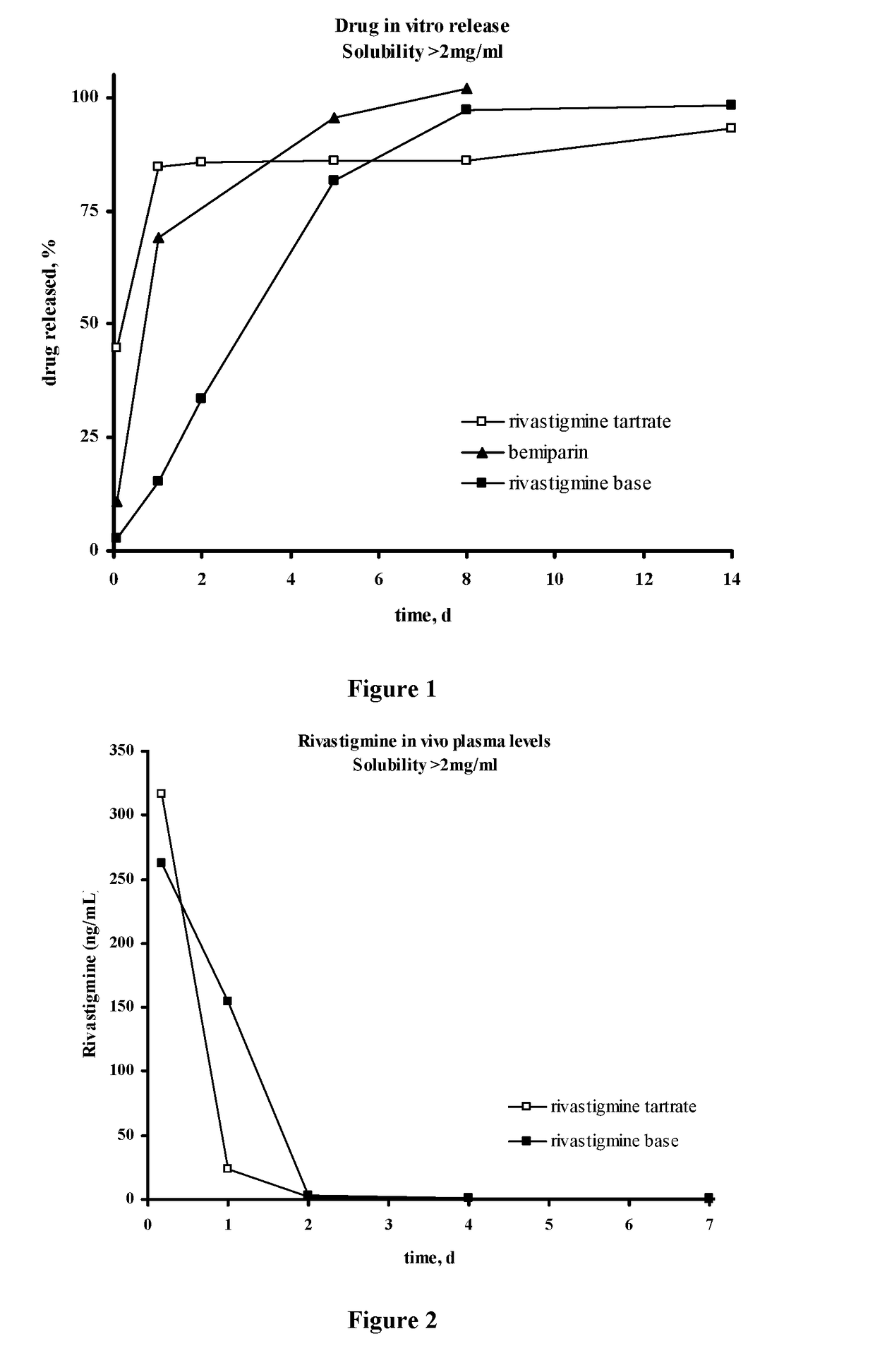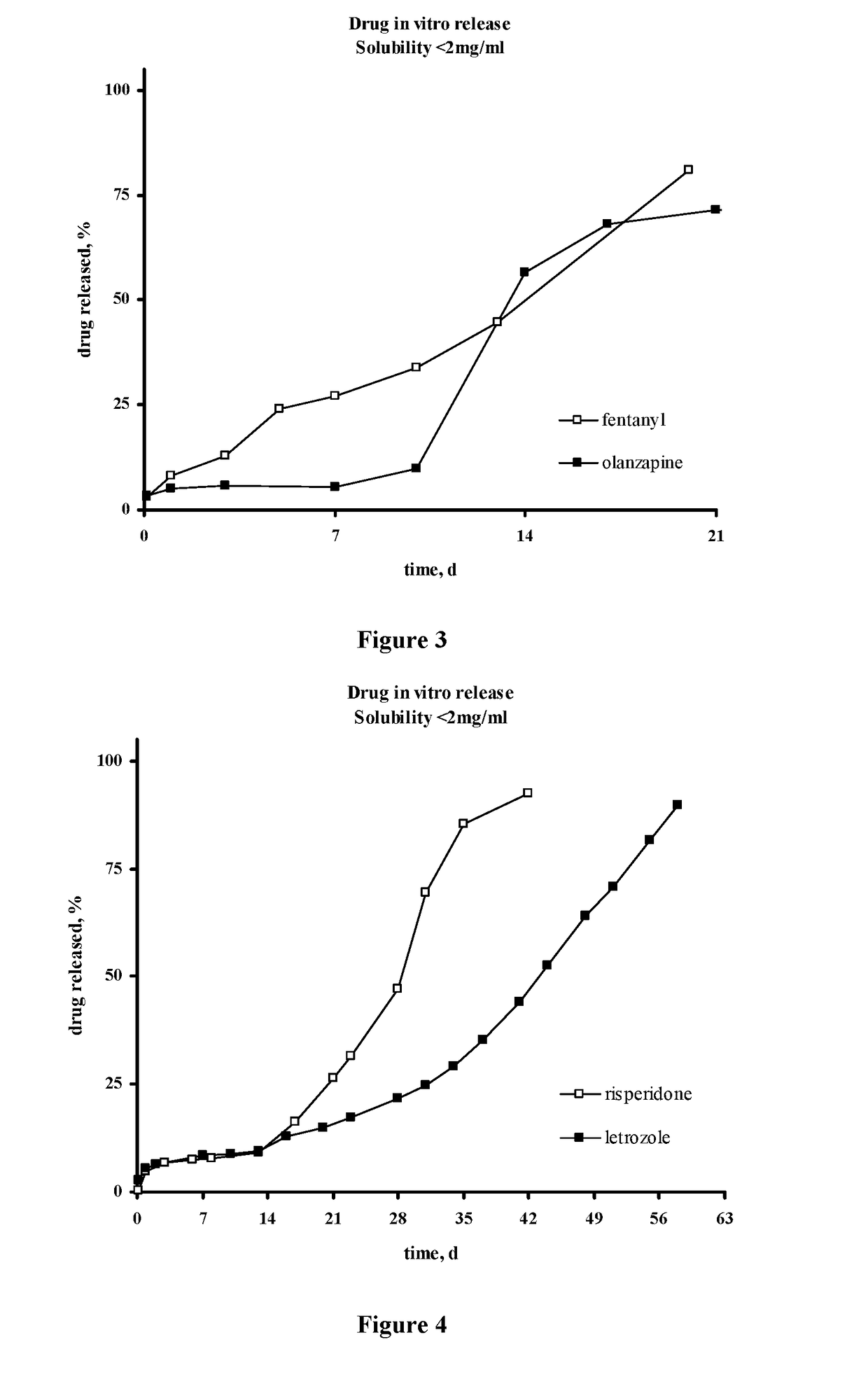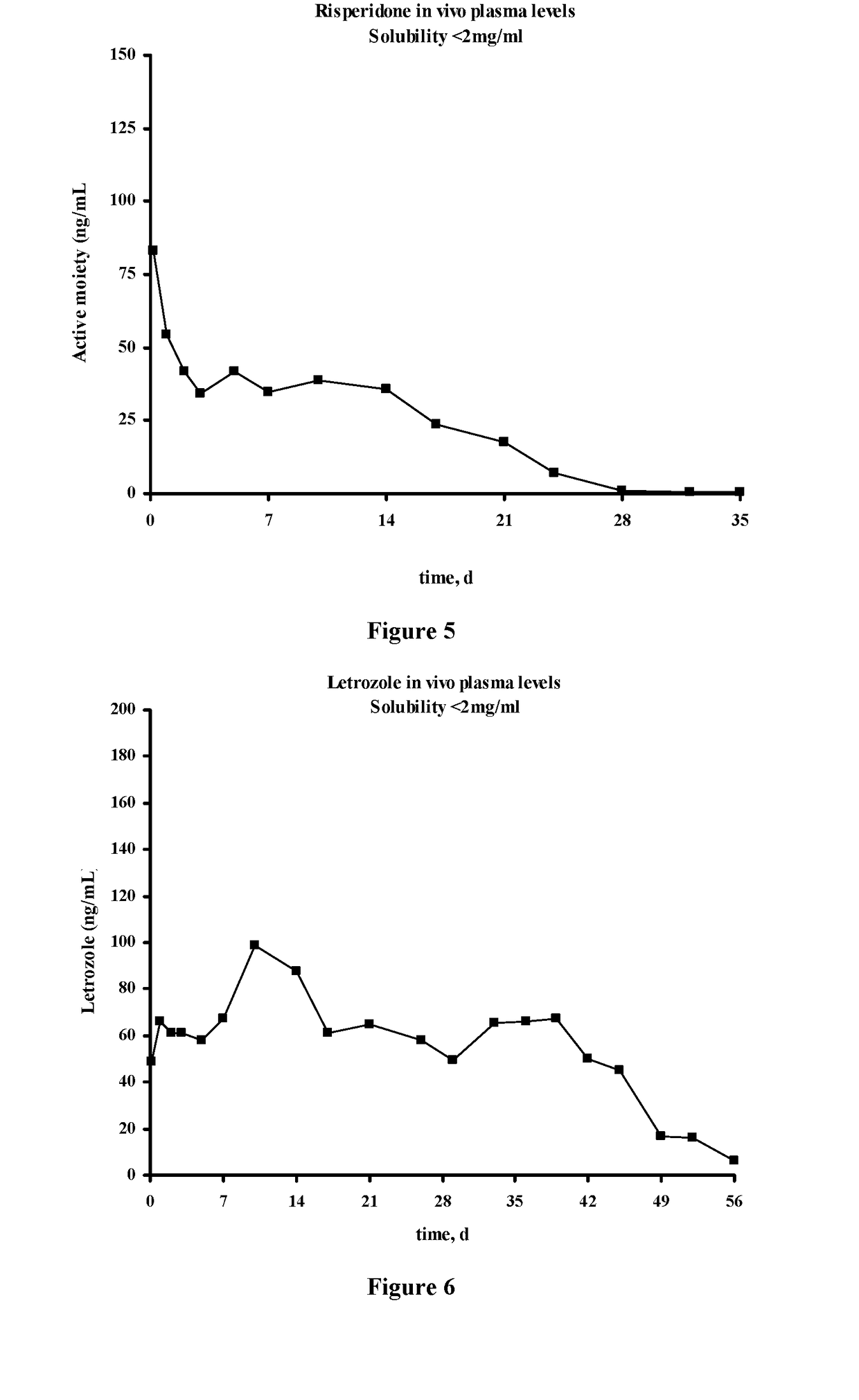Methods for the Preparation of Injectable Depot Compositions
a technology of depot composition and composition, which is applied in the field of preparation of injectable depot composition, can solve the problems of affecting the mood of patients, irregular or inconstant treatment, and dissociation (non-compliance) of some schizophrenic patients from treatment, and achieves the effect of constant and effective plasma levels, convenient method of production, and convenient method of production
- Summary
- Abstract
- Description
- Claims
- Application Information
AI Technical Summary
Benefits of technology
Problems solved by technology
Method used
Image
Examples
example 2
Implantable Composition Including a Drug with Water Solubility <2 mg / mL (Continuation)
[0162]In the present example, the composition of the implantable formulation was as follows:
PolymerPolymerPolymerInherentSolutionlactic / glycolicViscosityComponent Amount (mg)ViscosityDrugratio(dL / g)SolventDrugPolymerSolvent(Pa · s)Fentanyl50:500.40DMSO251002506.77Olanzapine50:500.40DMSO50501001.85
In Vivo Plasma Levels After Intramuscular Administration to New Zealand Rabbit:
[0163]The formulations of this example were intramuscularly injected to New Zealand White rabbits weighing an average of 3 kg. The amount injected corresponded to a dose of 4.2 mg fentanyl or 46.2 mg olanzapine, and the composition was intramuscularly placed in the left hind leg using a syringe with a 20 G needle. The total number of rabbits per formulation was 3. After injection, plasma levels were obtained at 0, 4 h, 1 d, 2 d, and periodically up to 14 d and 36 d, respectively.
[0164]The kinetics of the drug plasma levels corre...
example 3
Different Inherent Viscosities of the Polymer for the Drug Fentanyl
[0166]In the present example, the composition of the implantable formulation was as follows:
PolymerPolymerPolymerInherentSolutionlactic / glycolicViscosityComponent Amount (mg)ViscosityFormulationDrugratio(dL / g)SolventDrugPolymerSolvent(Pa · s)AFentanyl50:500.40DMSO25751751.12BFentanyl50:500.40DMSO251001506.77CFentanyl75:250.20DMSO252003000.43DFentanyl75:250.20DMSO251251251.95
[0167]The implantable formulations were prepared by completely dissolving the polymer in the solvent and subsequently adding the drug in said polymeric solution.
In Vitro Release Profile:
[0168]The drug released from formulations A and C of this example was evaluated according to the following procedure: The amount of formulation corresponding to 9 mg of fentanyl was injected from prefilled syringes into flasks having a pre-warmed release medium by using a 21 G needle. The release medium was 100 ml phosphate buffer pH=7.4. The flasks were then place...
example 4
Different Inherent Viscosities of the Polymer for the Drug Olanzapine
[0172]In the present example, the composition of the implantable formulation was as follows:
PolymerPolymerPolymerInherentSolutionlactic / glycolicViscosityComponent Amount (mg)ViscosityFormulationDrugratio(dL / g)SolventDrugPolymerSolvent(Pa · s)AOlanzapine50:500.43DMSO2550116.61.62BOlanzapine50:500.43DMSO2533.366.73.16COlanzapine75:250.20DMSO2566.61000.43DOlanzapine75:250.38DMSO2550116.60.66EOlanzapine100:0 0.30DMSO2525500.46
[0173]The implantable formulations were prepared by completely dissolving the polymer in the solvent and subsequently adding the drug in said polymeric solution.
In Vitro Release Profile:
[0174]The drug released from composition A, C, D and E of this example was evaluated according to the following procedure. The amount of formulation corresponding to 10 mg of olanzapine was injected from prefilled syringes into flasks having a pre-warmed release medium by using a 21 G needle. The release medium was...
PUM
 Login to View More
Login to View More Abstract
Description
Claims
Application Information
 Login to View More
Login to View More - R&D
- Intellectual Property
- Life Sciences
- Materials
- Tech Scout
- Unparalleled Data Quality
- Higher Quality Content
- 60% Fewer Hallucinations
Browse by: Latest US Patents, China's latest patents, Technical Efficacy Thesaurus, Application Domain, Technology Topic, Popular Technical Reports.
© 2025 PatSnap. All rights reserved.Legal|Privacy policy|Modern Slavery Act Transparency Statement|Sitemap|About US| Contact US: help@patsnap.com



